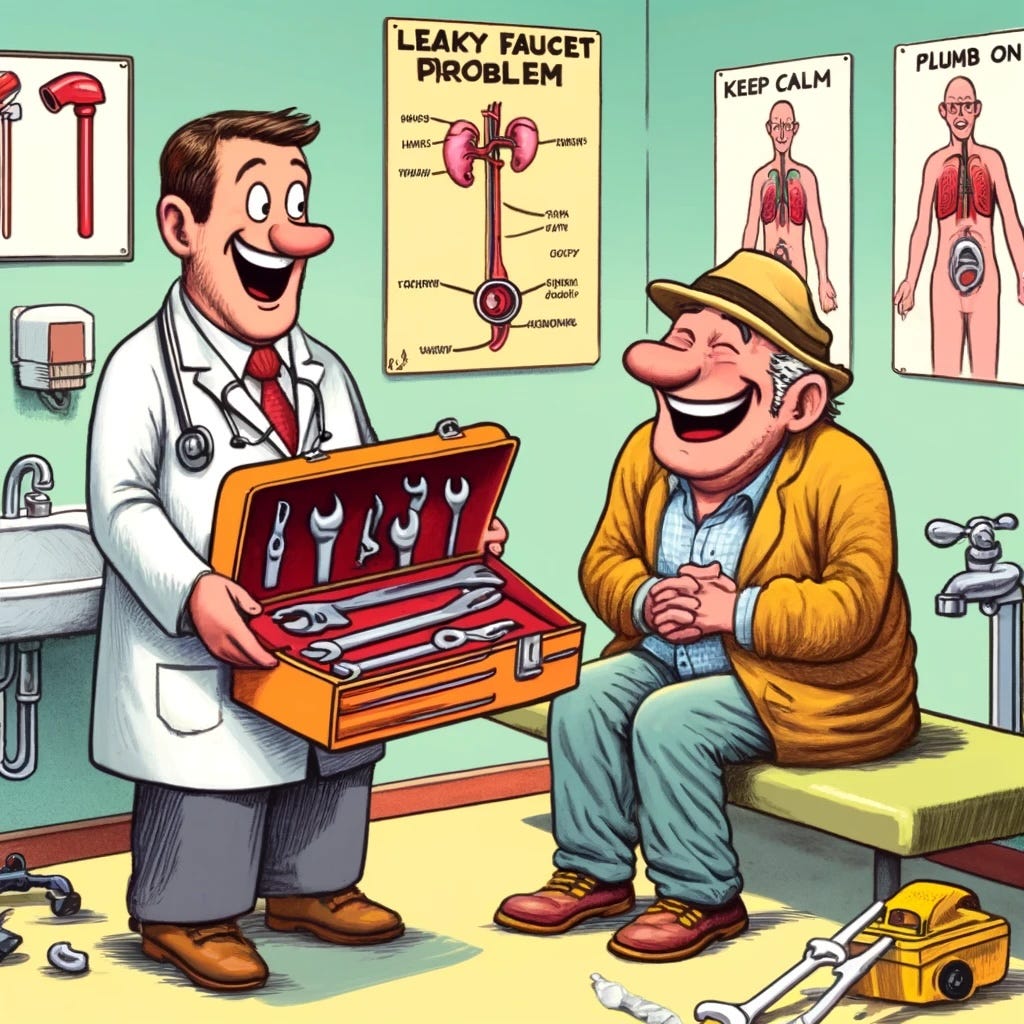Managing Urinary Dripping and Incontinence: A DIY Guide for the Home Handyman Dad
Ah, the pesky leaky faucet, a frequent frustration indeed. It often begins innocuously, with just a few drops intermittently, yet before you know it, it transforms into a persistent, bothersome drip that cannot be ignored. For those fathers who pride themselves on their ability to address household matters independently, consider urinary dripping or incontinence as akin to that persistent faucet drip in human form. Though they may initially appear insignificant, both issues could indicate a requirement for further exploration and perhaps some adjustments or remedies. It's always wise to delve deeper into such matters to ensure everything is functioning as it should.
Understanding the Mechanics
Alright, let's begin with the fundamentals. Picture a faucet: it relies on valves to manage the flow of water, opening and closing as needed. When these valves, or the washers within them, wear down or sustain damage, that's when you start hearing that pesky drip. Now, in the human body, we have our own version of this valve—it's called the urinary sphincter. This muscle plays a crucial role in controlling the flow of urine from the bladder. When it's working as it should, it tightly seals the bladder. However, when it's not functioning properly, you might encounter leaks (known as incontinence) or experience dripping even after you believe you've completed urinating.
The Causes of Leaks
In plumbing, there's a range of culprits behind a leaky faucet. It might be a subtle crack in a pipe, a worn-out washer, or a seal that's seen better days. Similarly, when it comes to urinary dripping and incontinence in people, the causes can vary widely. It could stem from a weakening of the pelvic floor muscles, which play a vital role in supporting the bladder and urinary tract. Factors like prostate issues in men, or the effects of childbirth and menopause in women, can contribute to this weakening. Additionally, urinary tract infections, inflammation, or neurological conditions that disrupt nerve signals to the bladder and sphincter could also play a role.
Diagnosing the Problem
Think of diagnosing urinary issues like troubleshooting a leaky faucet. Just as you'd start by determining whether the leak originates from the faucet handle or the spout, diagnosing urinary problems involves identifying the precise issue. One helpful strategy is to keep a "leak journal," much like noting when your faucet tends to drip the most. By documenting when leaks happen, the circumstances surrounding them, and how often they occur, you provide valuable information that can assist your healthcare provider in identifying the type of incontinence and its potential causes. This simple practice can be incredibly insightful in guiding further evaluation and treatment.
Tools of the Trade
For fixing a simple faucet, you might need a wrench, some plumber's tape, and maybe a new washer. For tackling urinary dripping and incontinence, the tools are a bit different. They might include:
- Pelvic floor exercises: Often referred to as Kegel exercises, these are designed to strengthen the muscles of the pelvic floor. Think of it as tightening the screws on a loose handle to make sure everything is snug and secure.
- Medications: Just as you might use a specific sealant or lubricant for different types of plumbing materials, different medications can help relax the bladder or tighten the sphincter based on the specific need.
- Surgical options: In cases where conservative treatments don’t work, surgery might be necessary. This is akin to having to replace a section of pipe or install a new faucet altogether when repairs aren’t enough.
Routine Maintenance
Just like with plumbing, staying ahead of issues through preventive maintenance is crucial for urinary health too. For plumbing, this might involve routine inspections to catch any signs of rust or wear in pipes, and replacing components before they give out. Similarly, maintaining urinary health involves regular check-ups, ensuring proper hydration, managing a healthy weight, and incorporating pelvic exercises into your routine. These simple steps can go a long way in ensuring that your urinary system stays in good working order, preventing problems before they have a chance to develop.
When to Call a Professional
Just like knowing when to call in a professional plumber for a plumbing issue beyond your DIY skills, recognizing when to seek medical advice for urinary concerns is equally important. If you find that urinary symptoms persist, worsen over time, or begin to significantly affect your daily life, it's crucial to reach out to a healthcare provider. They have access to more advanced diagnostic tools, treatments, and support that can offer relief and address the issue effectively. Don't hesitate to seek professional help when needed—it can make all the difference in restoring your comfort and well-being.
Urinary dripping and incontinence, like leaky faucets, aren't just minor inconveniences—they can indicate underlying issues deserving of attention. However, armed with the right tools, understanding, and sometimes a bit of professional assistance, both can be effectively managed. So, for all the handyman dads out there, here's your call to action—whether it's addressing that persistent drip in your bathroom sink or managing your own urinary leaks, you have the ability to take charge and resolve the problem. Remember, a little maintenance can go a long way in ensuring smooth operations, both in your home and your body.

